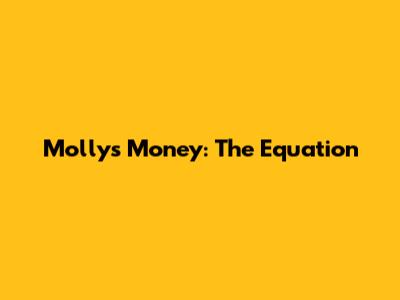
Hey guys, let's dive into a fun little math problem that's super common in everyday life! You know, sometimes we need to figure out how things add up, or in this case, how they multiply. Today, we're going to tackle a scenario involving Molly and her brother's money. We've got Molly, who's feeling pretty good with a cool $45 in her wallet. Now, the key piece of info here is that this 45is∗∗exactlythreetimes∗∗theamountofcashherbrotherhas.Thisiswherethemagicofalgebracomesin,helpingustranslatereal−worldsituationsintoneat,tidyequations.So,stickaroundaswebreakdownhowtosetupanequationtorepresentthissituation,using′a